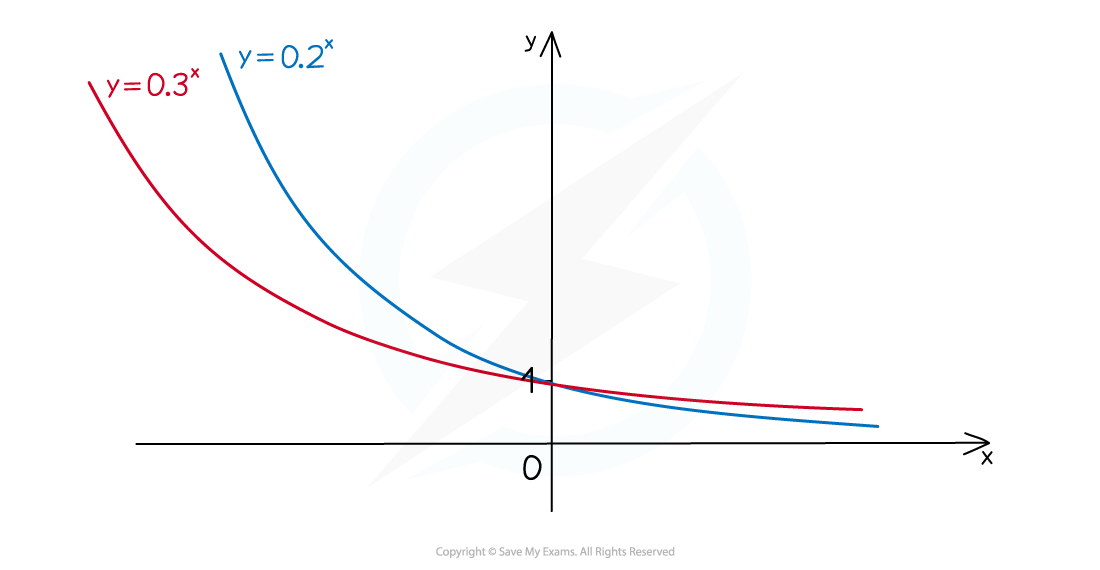Exponential Graphs
What is an exponential?
- An exponential is a function where the power is a variable, usually
is an example of an exponential
- In this course exponentials will be in either of the following forms
- Where
and
are rational numbers,
and
is a variable
can be equal to 1, resulting in
or
- All of the following are examples of exponentials you may encounter
What does an exponential graph look like?
- A graph of the form
where
is positive and larger than 1 will be increasing as
increases
is increasing
- A graph of the form
where
is positive and larger than 1 will be decreasing as
increases
is decreasing
- If
is between 0 and 1, then the opposite is true
is decreasing
is increasing
- An equation of the form
stretches the graph of
vertically by scale factor
- If
is negative, then this would also reflect the graph in the
-axis
- If
- The
-intercept of
and
will be
- You can show this by substituting
into the equation
- Substituting
into
or
will reduce both to
- This means that for an exponential in the form
or
, the
-intercept will simply be (0,1)
- You can show this by substituting
- The graphs do not cross the
-axis anywhere
- Exponential graphs do not have any minimum or maximum points
- They are either always increasing, or always decreasing



How can I find the equation of an exponential graph?
- A typical exam question may give you one or two co-ordinates that lie on a curve, and an approximate form for the equation of the graph
- e.g.
or
- e.g.
- Remember that all co-ordinates on the curve must satisfy the equation
- You can therefore substitute each coordinate into the given equation, and solve to find any unknown constants
Exam Tip
- Remember that the
intercept can often be found by inspection, which may save you some working
- For
or
the
-intercept is
- For
or
the
-intercept is
- For
Worked example
Here is a sketch of the curve where
and
are positive constants.
and
lie on the curve.

Work out the values of and
.
The value of can be found by inspection. The
-intercept is (0, 6) so
The value of can be found by substituting the second coordinate into the equation and solving.
Solve to find .
must be positive, so disregard the negative value.

